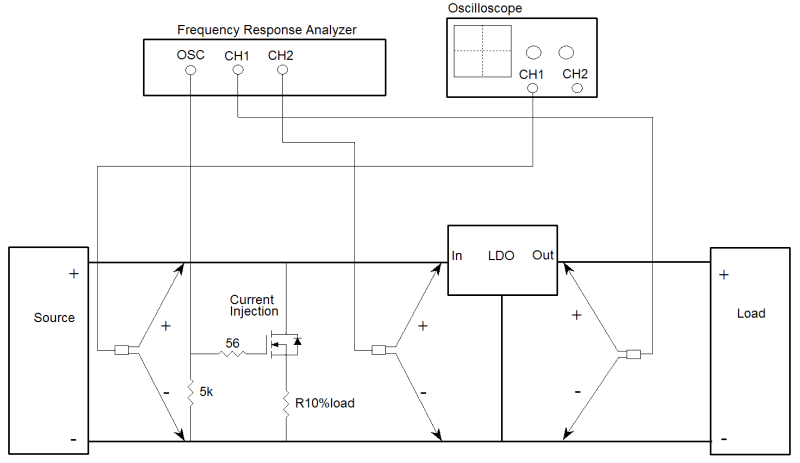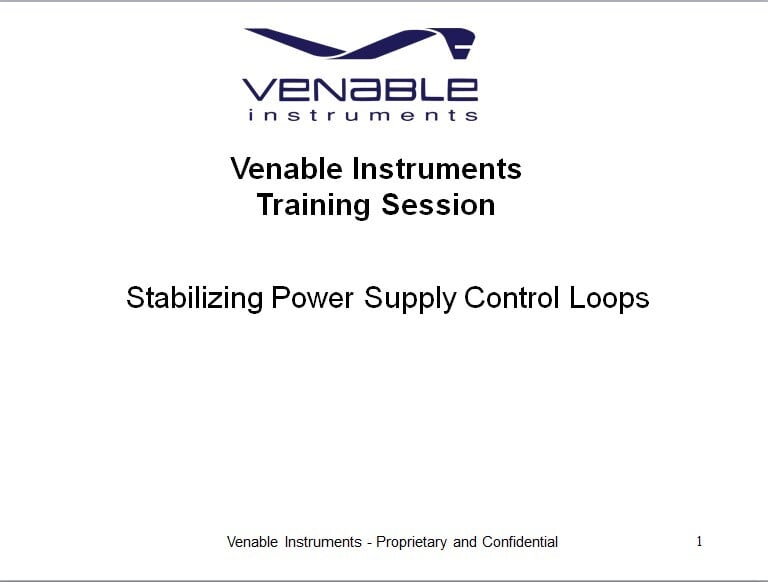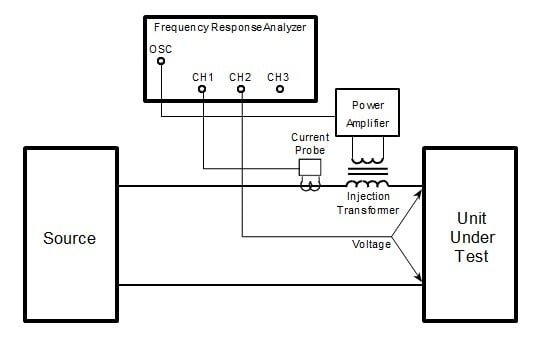Measuring the Power Supply Rejection Ratio
By Michael Gray - July 26, 2022
What is the power supply rejection ratio (PSRR)? The PSRR measures the ability of a low dropout (LDO) linear voltage regulator to reject input power source ripple on its output.
To measure the PSRR, a disturbance is put on the input where channel 2 is connected to the input of the regulator or power supply and ground and channel 1 is connected to the output of the regulator or power supply and ground. Channel 2 over channel 1 is the default channel ratio which our analyzer software automatically plots. The transfer function is inverted so that the input is over output to make the PSRR measurement in decibels (dB) positive.

You can disturb the input several ways. You can modulate a power supply that has that capability. These are usually frequency limited. You can use an IOZ transformer, with a high saturation current secondary, to inject in series with the power line. However, these transformers are usually frequency limited at higher and lower frequencies.
The best and cheapest method is to use a power MOSFET with a load resistor connected in parallel with the power input to inject a current as shown in Figure 1. The load resistor is usually limited to about 10% to 20% of the input current with the MOSFET fully on. The MOSFET is biased on using the DC bias feature of the Venable analyzer control menu until it is drawing 5 to 10% of the load current or you have enough room for your injection signal. Adding an additional gate resistor to limit current and also a gate pulldown resistor to keep the FET off when no bias or signal is applied is good practice. It would also be a good idea to monitor and adjust the injection level using an oscilloscope.
This injection method has the advantage of a having a wide bandwidth from DC to the bandwidth of the MOSFET. Power MOSFETs should be chosen that are similar to the Infineon IRLU3714, which is now obsolete, such as the onsemi FDD6670A, so that device power dissipation is not an issue. Other MOSFET's can also be used depending on the voltage and current rating needed.

Figure 1 PSRR Test Setup
The exact same set up as in Figure 1 does not have to be used in every case because each situation is unique. However, the principle is the same when using a MOSFET to inject a disturbance into the power input of an LDO regulator or power supply to measure the PSRR or to make an impedance measurement.
Related Content:
New Techniques for Loop Stability Testing in Power Factor Correction Circuit
Testing Power Sources for Stability
Measuring the Input and Output Impedance of Power Supplies (Part 1)



